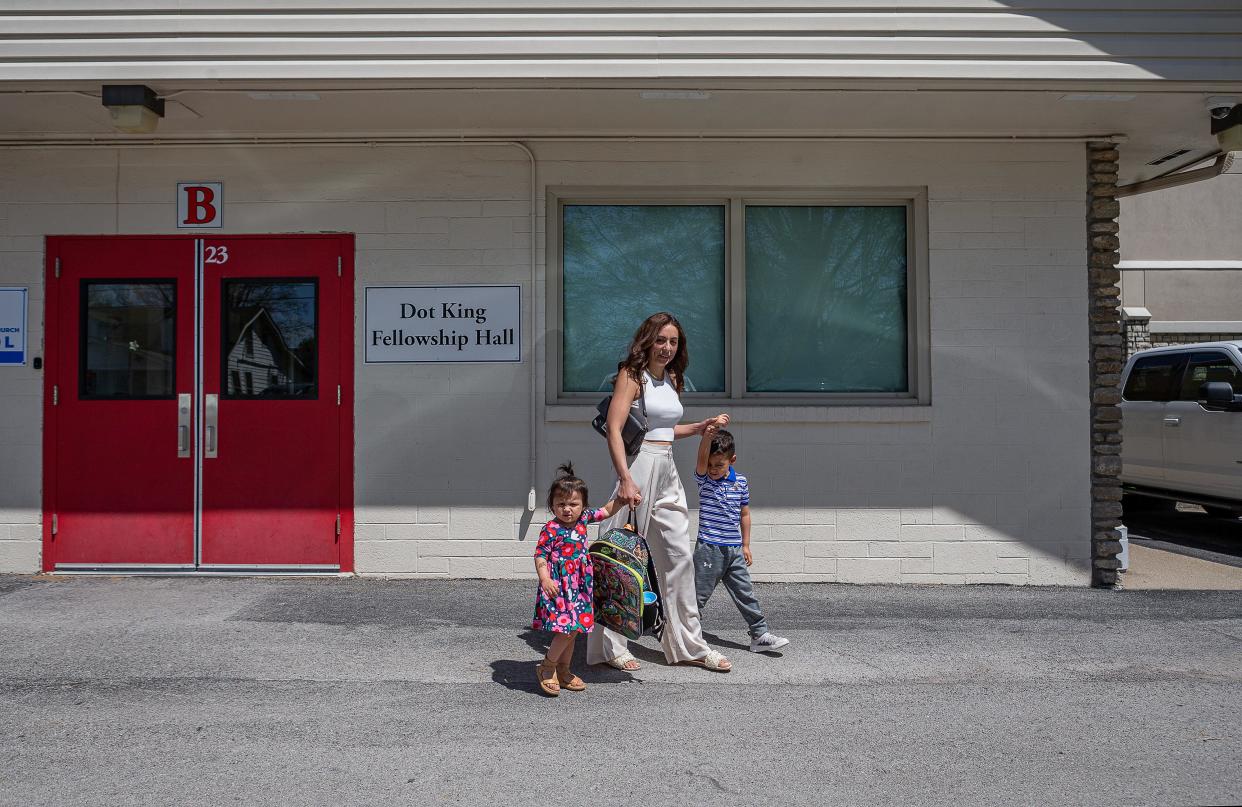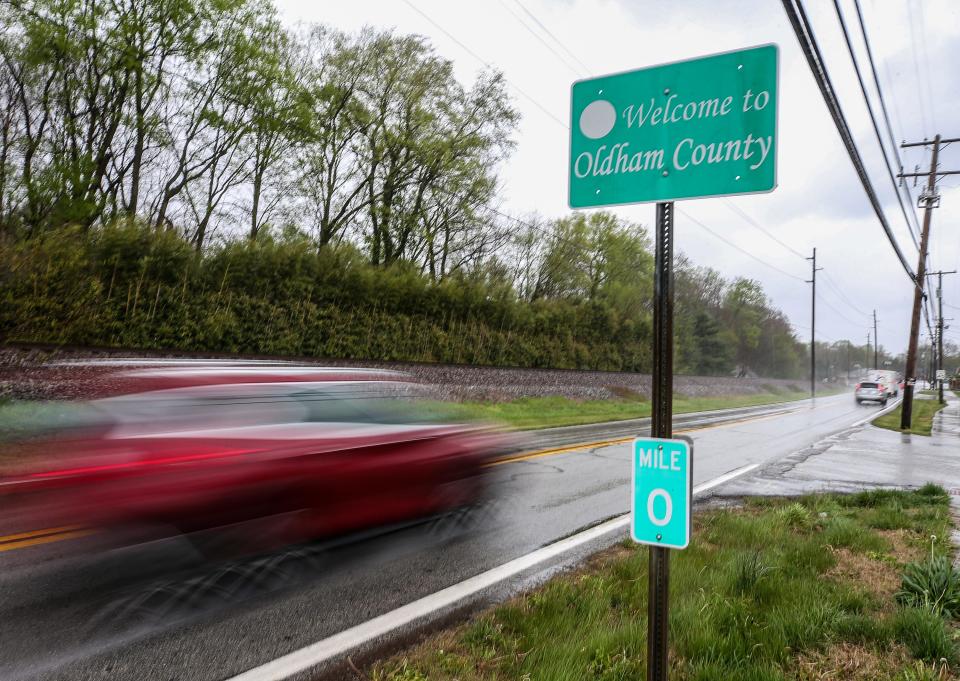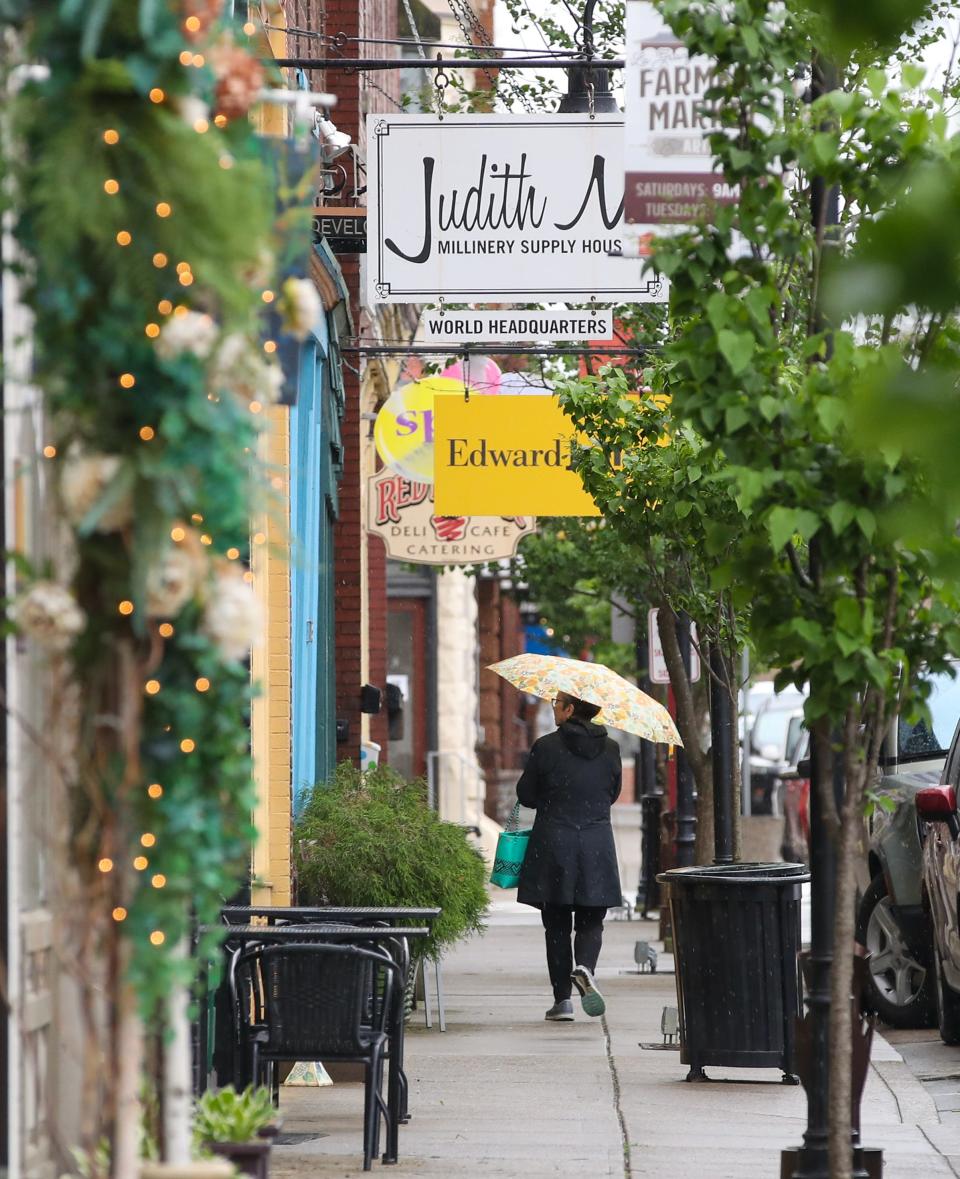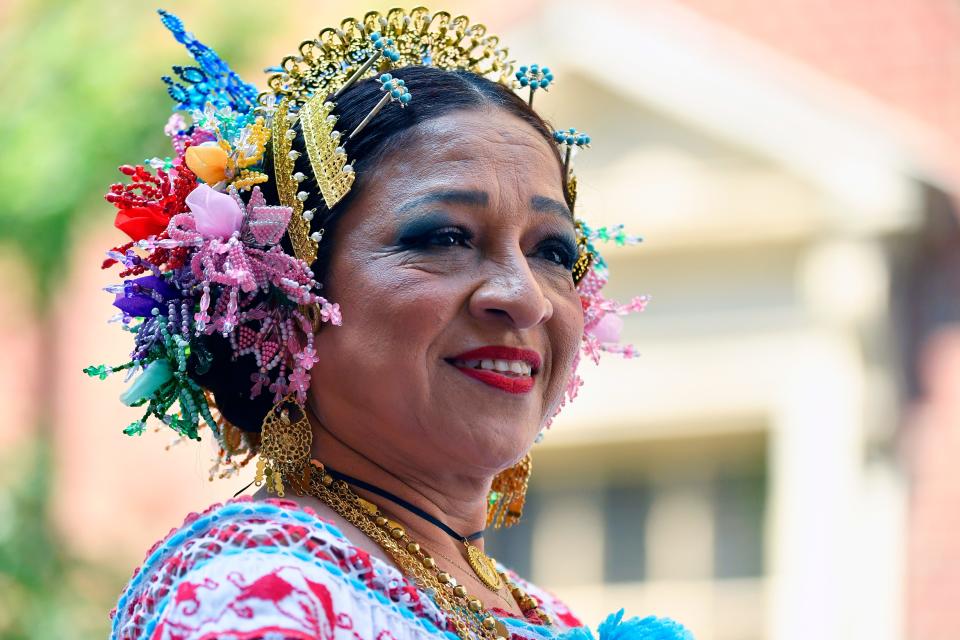Louisville is losing population while suburban counties grow. Can the city reverse course?

Axmarany Paniagua wants something more for her kids.
She wants them to grow up in a peaceful community, where strangers still stop to help when they see someone in trouble. She wants to be surrounded by parents who prioritize their children's education and feel a sense of community she's missing in the south Louisville neighborhood where she now lives.
She hasn't had to look far to find what she wants. Last year, Paniagua and her fiancé began building a home in Crestwood, a city of about 6,000 in nearby Oldham County, where she's already enrolled her 4-year-old son in preschool.
"We knew we wanted to do this for a long time," she said. "... Once we saw an opportunity, we jumped on it and didn't even think twice about it, and it's been a great decision."
Paniagua isn't the only one making such a choice. Since 2020, Louisville has been losing residents, while surrounding counties' populations have grown — a trend some say is troubling as the city seeks to attract more businesses and talent.
New estimates from the U.S. Census Bureau show a 1.4% decline — just under 11,000 people — in Jefferson County's population between April 2020 and July 2023. And while the number might seem small, it represents a sizeable dent when considering the county added about 42,000 people between 2010 and 2020.
"A city's economic power comes from its population," said Matthew Ruther, director of the Kentucky State Data Center at the University of Louisville. "In the U.S., we expect to see population growth. We see population loss as a bad thing. ... It's always a little concerning."
The decline coincided with the turmoil of the COVID-19 pandemic, which contributed to higher-than-normal death rates and led many residents to move from large cities.
But while Louisville's regional peer cities have also seen dips in their populations, the Derby City has lost residents to outmigration at a faster pace, according to a Courier Journal analysis.
At the same time, the 12-county metro area's overall population has stagnated, rising just 0.3% since 2020.
Those are problems Mayor Craig Greenberg is trying to solve through his Grow Louisville Together plan, which seeks to increase the city's population to a million residents by 2038, with a focus on drawing in more adults between the working ages of 25 and 54. Jefferson County's population currently hovers around 770,000.
"In the history of every city, there are times when many streams of opportunity can come together to create a river of change," the plan states. "This is that time for Louisville, a time to think big and move outside its comfort zone."
Louisville lags behind its regional peers

Jefferson County's population has decreased every year since the 2020 census, according to estimates drawn from birth and death reports, tax records and social security information.
The biggest cause for the decline is domestic migration, with the county experiencing a net loss of 17,000 residents through mid-2023.
The latest Census Bureau data does not show where those residents moved, but Ruther at the state data center said many likely relocated within the metro area.
"Most of it probably isn't people going from Jefferson County to Arizona or Florida," he said. "It's primarily to Oldham County or Bullitt County."
Jefferson County's population is still the largest by far in the region. But populations in its surrounding counties continue to inch upward, with Oldham and Bullitt — along with Clark County in Indiana — each experiencing more than 3% growth since 2020.
That same trend has played out in nearby metros, including Indianapolis, Cincinnati and Nashville. But while the greater Louisville area's total population barely budged, those metros saw higher growth rates between 1% and 4.4%.
"If we're seeing movement from Jefferson to Oldham, it's probably not affecting the whole economic wellbeing of the region," Ruther said. "But if a lot of people are moving out of the metro area, that's problematic. Louisville Metro is growing very, very slowly."
One thing keeping Louisville from further decline, Ruther added, is the continued influx of foreign-born residents.
Since 2020, Louisville has seen a net gain in that population of about 6,200 people, according to Census estimates.
Amos Izerimana, director of International and Immigrant Affairs in Louisville, said that number is likely an undercount.
"The (U.S. Department of State) allowed for a third refugee resettlement agency to open in Louisville because of how fast we're getting refugees resettled in our community," Izerimana said, adding foreign-born residents are expected to make up about 20% of Louisville's population by 2040.
More: An ever-changing ‘heartbeat.' How Churchill Downs’ Paddock has changed over 150 years
Suburban counties welcome more growth

There are signs of growth at every exit of Interstate 71, cutting through the center of Oldham County.
There's the new Kroger that opened in Buckner, near a subdivision that's still under construction. There's the new interchange near La Grange, where a business park is gearing up for major expansion. And soon, work will start on a Norton Commons-style community in Crestwood, called Clore Station.
The new developments are expected to make it easier for residents to find everything they need within the community — and draw even more to the area.
"I feel a bit of a buzz going on," said Clint Kaho, president of Baptist Health La Grange, which will soon open a new behavioral health unit and pharmacy service center on its campus.
Baptist Health has served Oldham County since the 1990s. And in 2022, it announced plans to build a $250 million hospital in Crestwood as part of Clore Station in response to the population increase in Oldham, Shelby, Henry and Trimble counties.
"We felt it was time to do something transformative," said Dr. Jody Prather, chief strategy and marketing officer for Baptist. "I think the growth is enough in that area to support significant health care resources in both spots."

Kelly Richie moved to Crestwood from Jeffersonville with her husband and kids three years ago and said she looks forward to the coming businesses and amenities. But she's also worried about growth happening too fast.
"We moved here for the schools, and it's been phenomenal, the teachers and support," she said. "It's everything we hoped it would be. But with an influx of people, what's the plan to make sure that continues?"
Judge-Executive David Voegele said Oldham's quality of life has "never been for sale," and county officials "do all we can to protect it."
"We've got a great place to live, and we want to keep it that way," he said. "We welcome people coming here. We haven't reached the tipping point yet."
South of Louisville, growth is also noticeable along another major corridor running through Bullitt County — Interstate 65.
In Shepherdsville alone, a new University of Louisville hospital and a new Bullitt County Public Library location have recently opened. A state-of-the-art aquatic center is also in the works.
Tara O'Hagan, executive director of the library system, said Bullitt County has long offered residents "space to build a life, whether with your family or your business or anything like that." And the increased ability to see doctors, dine at local restaurants and find resources within the community will only encourage more people to relocate here.
"Anybody you talk to has a story to tell about Bullitt County, it seems like," O'Hagan said. "People like the fact that they feel safer, they feel more at home because they don't feel like they're being crowded in. There's neighborhoods being built here, but they're not on top of each other. Every piece of grass isn't going to be occupied by something.
"I love that our cities and county are working so hard to bring (things) that the community wants."
More: 'The most important neighborhood." What a new strategy envisions for downtown Louisville
City leaders work to reverse Louisville's course
Hannah Esper is shocked by the frequent response she gets when she says she moved to Louisville from Colorado.
"They say, 'I'm sorry,'" said the recent transplant, who's involved in Greater Louisville Inc.'s City Champs program. "I'm like, don't be. This has been a great move for me and my family. ... We're able to have things I was unable to have in the last place I was living" — most importantly a home she can afford to own.
That's a perspective city leaders say must spread if Louisville is to attract potential residents away from other cities — and keep those already here from leaving.
"So often, people in Louisville have this weird insecurity," said Ben Reno-Weber, a Louisville Metro Council member and former director of the Greater Louisville Project, a non-partisan research initiative. "When we don't love our space, it makes it hard for other people to love our space. We need to be ambassadors for the city we want to be."
Reno-Weber and others agree growth throughout the metro area is positive, as people who live in Oldham, Bullitt and other counties often travel into Louisville for work and entertainment.
But "you miss the point if you say the suburbs are the point of gravity," Reno-Weber said. "The city is the point of gravity. So we have to invest in the city, and that will strengthen the suburbs."
Mayor Greenberg's Grow Louisville Together Plan calls for a broad range of investments and initiatives meant to increase the city's population and opportunities, including repurposing downtown office buildings into new homes and hotels, establishing a free pre-K program and improving access to business capital.
"Time is of the essence," the plan states. "Cities across the country are competing for the next wave of growth in this country. Louisville has unique competitive advantages but has not communicated them well or capitalized on them."

One aspect of Louisville the city can do a better job sharing is its growing immigrant and refugee populations, which add culture to the community and are filling crucial job gaps, said Izerimana with the Office of Immigrant Affairs.
"Every single year, about 70-plus percent of new refugee arrivals are working age," he said. "... That, I think, is important because it also shows businesses looking to move here that the workforce is increasing every single day, unlike most other places."
Louisville is increasingly seeing more immigrants move to the city through second migration — settling elsewhere, then relocating here, Izerimana said.
"Anecdotally, if you talk to any of those people who have moved here from other states or other cities, it's because they have family here and their family can tell them you come here, you'll have a good job, you'll be able to start a business, you'll have people from your country that speak your language and your culture will be celebrated here, and that's attractive," he said. "The more and more that we continue to create a welcoming environment in the city, the more we'll continue to see people moving to Louisville."
Reach reporter Bailey Loosemore at bloosemore@courier-journal.com, 502-582-4646 or on Twitter @bloosemore.
More: Kentucky losing family farms and farmland at a rapid clip — at what cost?
This article originally appeared on Louisville Courier Journal: Louisville losing population as suburban counties grow, data shows

